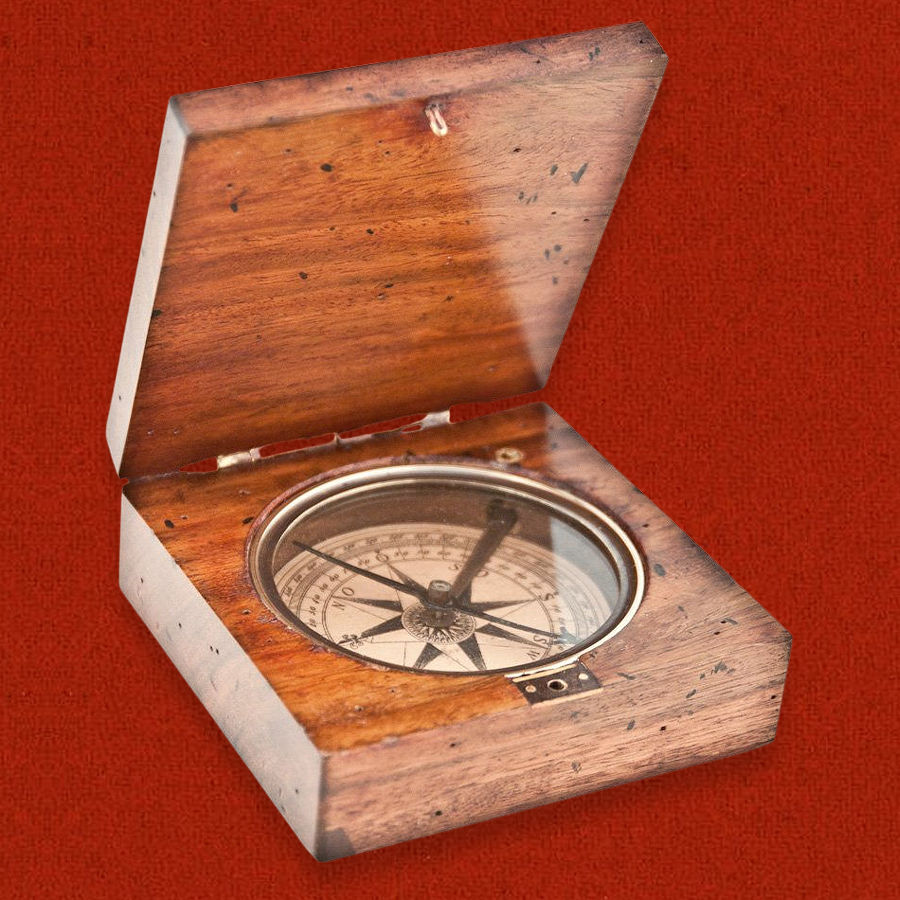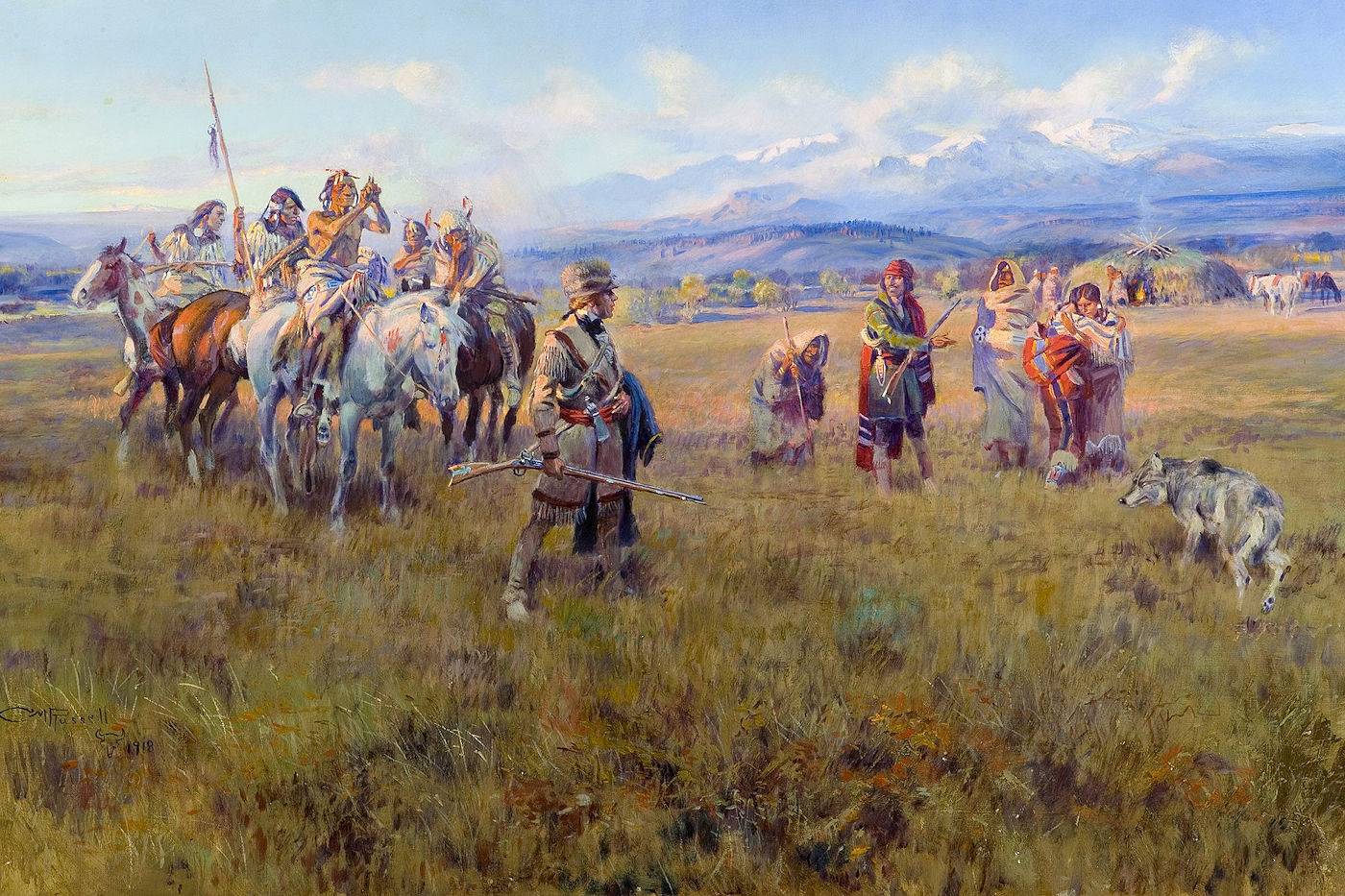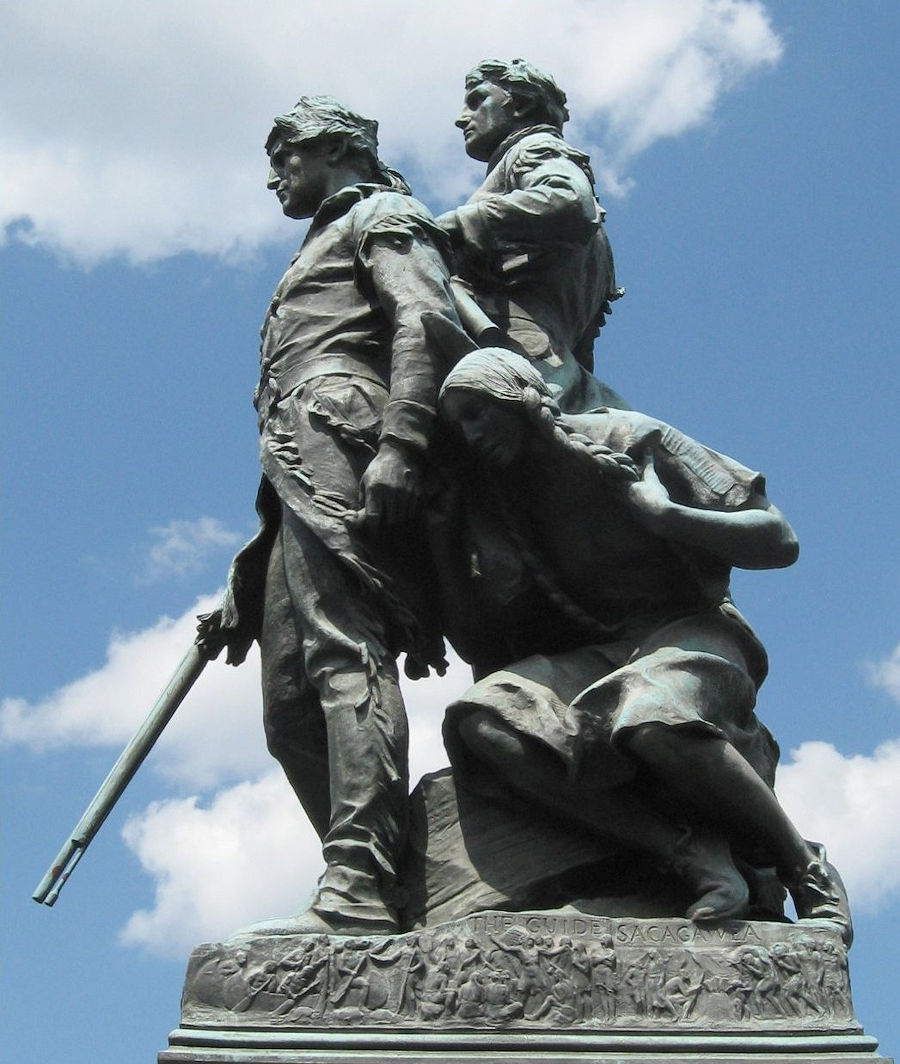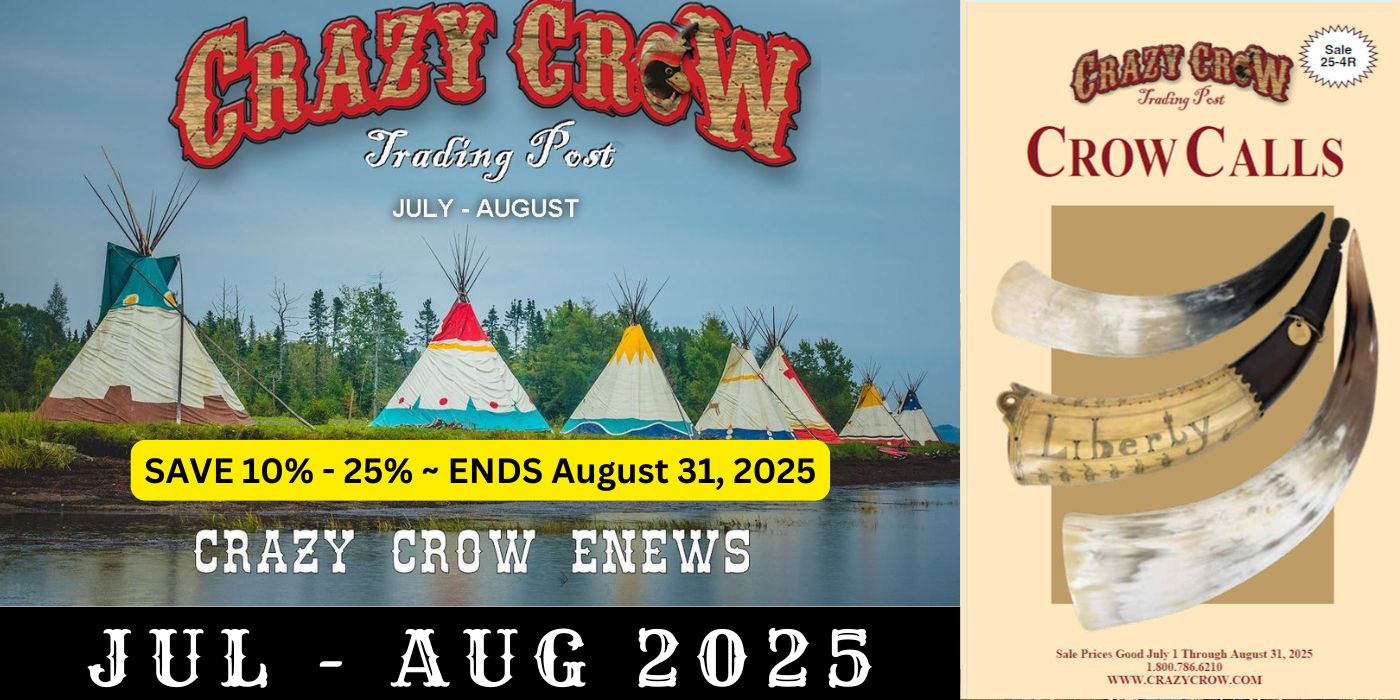

Lewis and Clark Compass
Exhibition of “The American Presidency” features Lewis & Clark Compass
Photo Credit: Samuel Lewis, Public domain, via Wikimedia Commons. Lewis and Clark track map published 1814 (cropped).
Lewis and Clark Compass
Exhibition of “The American Presidency”
features Lewis & Clark Compass
Photo Credit: Samuel Lewis, Public domain, via Wikimedia Commons. Lewis and Clark track map
published 1814 (cropped).
In November 2000, the exhibition, The American Presidency, opened at the Smithsonian Institution’s National Museum of American History. Among the objects on display was the Lewis and Clark compass. This brass and silver instrument, set in a mahogany box, was made by Thomas Whitney of Philadelphia. It was used by William Clark to explore the Missouri River and to search for possible routes across the continent to the Pacific Ocean. This was known as the “Journey of the Corps of Discovery,” which was organized by President Thomas Jefferson in 1803.
Corps of Discovery Sets Out
During the winter of 1803–1804, Lewis and Clark recruited, trained, and supplied men at Camp Dubois, on the eastern banks of the Mississippi in what is now Illinois. Following the official transfer of Upper Louisiana to the United States in March 1804, the expedition formally departed on May 14 of that year, officailly beginning the expedition. Sergeant Patrick Gass provides an account of that historic day:

Lewis & Clark Compass: Crazy Crow Trading Post Reproduction
The corps consisted of forty-three men (including Captain Lewis and Captain Clarke, who were to command the expedition) part of the regular troops of the United States, and part engaged for this particular enterprize. The expedition was embarked on board a batteau and two periogues. The day was showery and in the evening we encamped on the north bank six miles up the river. Here we had leisure to reflect on our situation, and the nature of our engagements: and, as we had all entered this service as volunteers, to consider how far we stood pledged for the success of an expedition, which the government had projected; and which had been undertaken for the benefit and at the expence of the Union: of course of much interest and high expectation.
The best authenticated accounts informed us, that we were to pass through a country possessed by numerous, powerful and warlike nations of savages, of gigantic stature, fierce, treacherous and cruel; and particularly hostile to white men. And fame had united with tradition in opposing mountains to our course, which human enterprize and exertion would attempt in vain to pass. The determined and resolute character, however, of the corps, and the confidence which pervaded all ranks dispelled every emotion of fear, and anxiety for the present; while a sense of duty, and of the honour, which would attend the completion of the object of the expedition; a wish to gratify the expectations of the government, and of our fellow citizens, with the feelings which novelty and discovery invariably inspire, seemed to insure to us ample support in our future toils, suffering and dangers.

Photo Credit: Charles Marion Russell, Public domain, via Wikimedia Commons
0137.2267 Lewis and Clark Expedition 1918 Charles Marion Russell, 1864 – 1926 (Artist)
As they made their historic trek north and west from Camp Dubois, near St. Louis, to the rugged coast of what is now Oregon, the explorers did not always know what it was they were seeing. A brilliantly researched, lavishly illustrated book by Carolyn Gilman, Smithsonian Books), mentions Captain Lewis taking a compass reading (N.65ºW.) on a mountain he mistakenly thought was part of the Rockies. But because the expedition had the compass, and three other pocket compasses bought for the trip, its members were able to create accurate, if rudimentary, maps. And whatever other worries and challenges each day might bring, the adventurers could at least be sure where they were headed.
Clark used his compass, and estimates of distance made by eye, to map the entire route to the Pacific. His final mileage estimate to the mouth of the Columbia was correct to within 1% in more than 4000 miles. Celestial navigation observations were made every few days on the journey – more than 200 times – but that data was never really used or published. The remarkable map of the western part of North America that Clark completed in 1810 became the single most valuable tangible result of the expedition and was a standard map of the west, used for decades.
Compass’ Path to the Smithsonian
Long after his epic journey was over, Clark gave the compass to Capt. Robert A. McCabe, a veteran of the War of 1812 who was commandant of Fort Crawford in Wisconsin in 1825, when Clark went there to negotiate the Treaty of Prairie du Chien with the Indians. The compass remained in the McCabe family until 1933, when it was given to the Smithsonian.

Photo Credit: Bill McChesney, CC BY 2.0, via Wikimedia Commons
This compass is one of the few surviving scientific instruments from the expedition. It is perhaps the single most important surviving piece of equipment remaining from the expedition. All government equipment remaining after the expedition was sold at a public “dock sale” in St. Louis immediately after the expedition’s return in September 1806. The purchase price for the material was a trifle more than $400. That is one reason so few articles remain from the journey of discovery. No surviving instruments are known except for Clark’s compass.
“Of all the scientific equipment bought in Philadelphia for the journey west,” says NMAH curator Harry Rubenstein, “the Clark compass may be the only surviving object. When the expedition returned, the interest was in things brought back from the Western tribes, and in the journals.” But Rubenstein points out that because the compass has taken on a symbolic importance far beyond its actual usefulness, “it is one of the treasures of our collection.”
The “Lewis and Clark compass” is now part of the permanent display of objects associated with Thomas Jefferson and the Louisiana Purchase at the Smithsonian’s National Museum of American History (NMAH). Two hundred years after Lewis and Clark embarked on their transcontinental journey of exploration, the compass and numerous other items were lent by the Smithsonian to the Missouri Historical Society for Lewis & Clark: The National Bicentennial Exhibition – – a multi-city museum exhibition – – commemorating Lewis & Clark’s adventure. A companion volume,Lewis & Clark Across the Divide, was published by Smithsonian Books in association with the Missouri Historical Society.
Lewis and Clart Compass “Hits the Road”
The National Bicentennial Exhibition opened at the Missouri History Museum in St. Louis in January of 2004. As the compass did in the hands of Clark so many years before, the exhibit traveled to many places before reaching its ultimate destination. It visited the Academy of Natural Sciences of Philadelphia, the Denver Museum of Nature and Science, and the Oregon Historical Society in Portland. Finally, in May 2006 it opened at the Smithsonian’s National Museum of Natural History where it remained until September 2006.
Replica Lewis & Clark Compass from Crazy Crow Trading Post
This authentic replica is an exacting copy of the famous compass that guided the Corps of Discovery during 1803 and 1804 on their search for a water passage to the Pacific Ocean. Without a doubt, this was the most fruitful “failed” expedition in American history! The aged bronze compass features a period correct, antique printed dial, is 2-1/2″ in diameter, and is fitted with a locking lever that restricts movement and prevents damage of the needle during travel. Mounted in a handsome, 3-1/4″ x 3-1/4″ x 1-1/8″ mahogany case with faux worm holes and hinged lid, it is a wonderful gift that will be treasured by any modern explorer!
Crazy Crow Articles
Current Crow Calls Sale
July – August
SAVE 10%-25% on popular powwow, rendezvous, historic reenactor, bead & leather crafter supplies. It’s official, Summer is here, and so is the heart of Powwow, Rendezvous & Historic Reenactment seasons. 4th of July Celebrations is here, and just blink and Labor Day will be here. This sale offers many popular items for Native American, Rendezvous & Historic Reenactment outfits. Sale items include our Missouri River Brand Serape Blankets, a big DVD sale, Missouri River Patterns, 18th Century Linen Hunting Shirts, select Damascus Knives, Buckskin Splits, Bone & Horn Hairpipe, Plastic Crow Beads, Leather Pouches & Bags, and much more!







